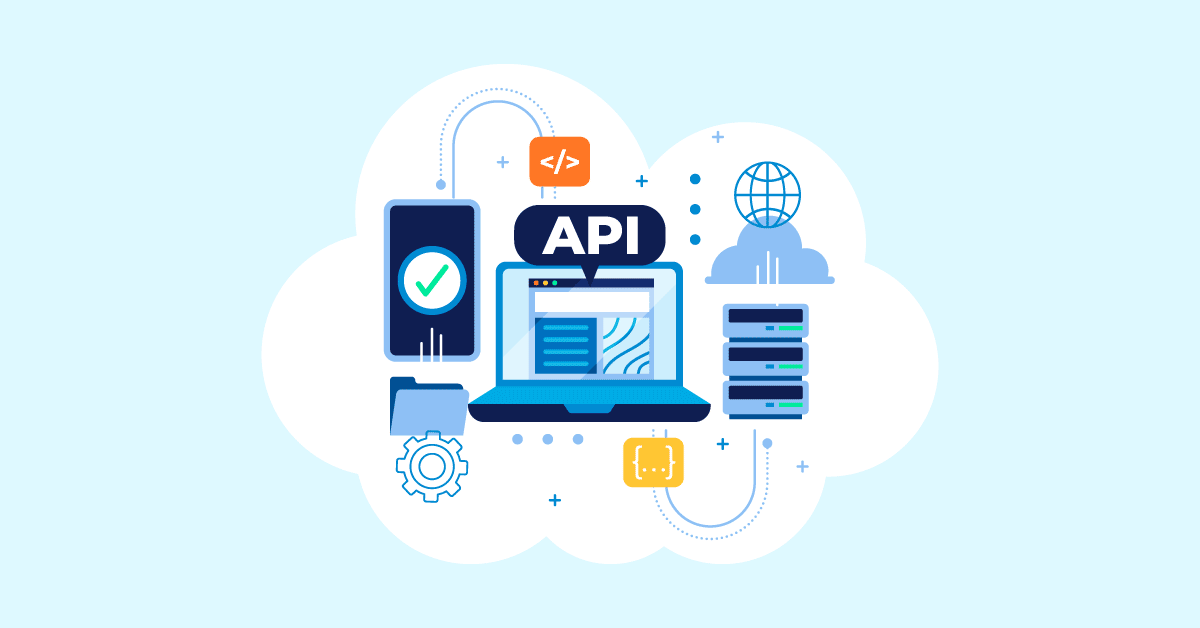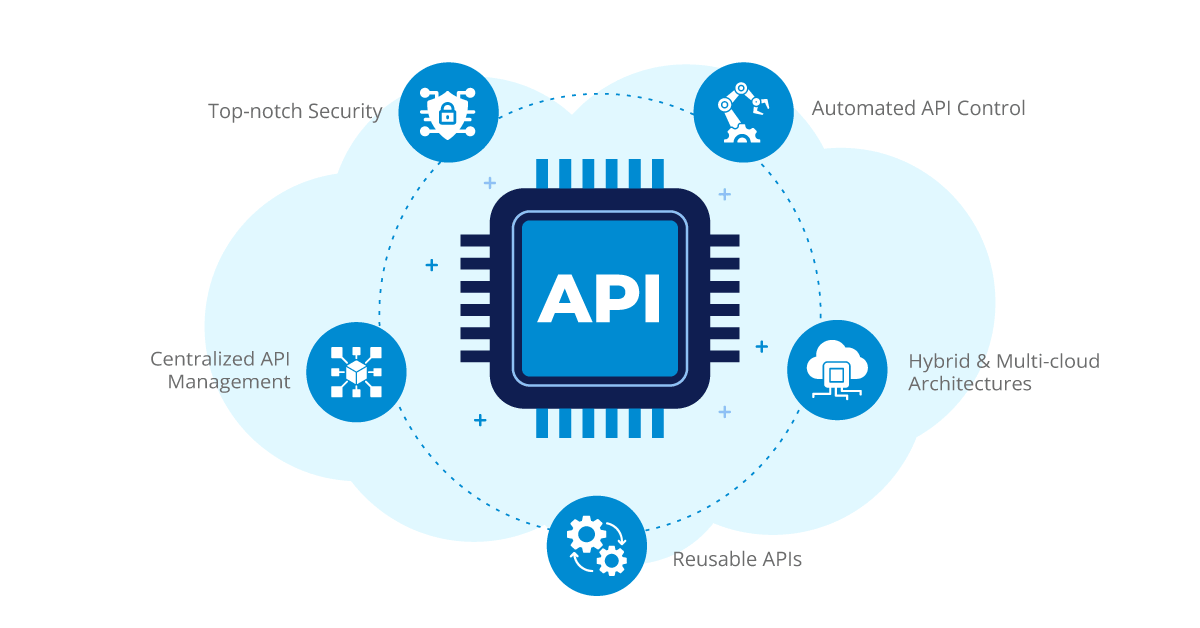Application Programming Interfaces (APIs) have become an essential part of almost every business. They allow applications to communicate and share data, enabling developers to create more powerful and efficient applications. With the rise of cloud-based applications, APIs have become even more critical. They enable developers to connect their applications to third-party services and data sources, making it easier to create powerful, integrated solutions.
Aonflow iPaaS – Free for First 3 Months!
Build and run up to 1,500 transactions monthly with no cost. No payment info needed!
As technology continues to evolve, the future of APIs is constantly evolving as well.
First, let’s look deeper at API Integration and understand what it is and how it works.
What is API integration?
API integration refers to the process of connecting different software applications through their APIs (Application Programming Interfaces) to allow them to share data and functionality. APIs are a set of protocols, routines, and tools used for building software applications, and they allow different applications to communicate with each other. API integration is used to streamline workflows, improve data accuracy, and automate business processes by allowing applications to share data in real-time.
For example, suppose a business wants to integrate its customer relationship management (CRM) software with its accounting software. In that case, it can use APIs to allow the two applications to communicate with each other and share customer data, invoices, payments, and other information. This integration can improve efficiency, reduce errors, and provide a more comprehensive view of the customer.
The API integration can take different forms, depending on the use case and the systems involved. Some common types of API integration include:
Data integration: This involves integrating data from different sources, such as databases, cloud services, and third-party applications. Data integration can help businesses consolidate and analyze data from multiple sources to gain insights and make informed decisions.
Application integration: This involves integrating different applications, such as CRM, ERP, and marketing automation software, to improve business processes and workflows. Application integration can help businesses automate tasks, reduce errors, and improve collaboration.
System integration: This involves integrating different systems, such as on-premise and cloud systems, to provide a unified view of the organization’s IT infrastructure. System integration can help businesses streamline IT operations, reduce costs, and improve security.
API integration is becoming increasingly important as businesses rely more on software applications to run their operations. By integrating applications through APIs, businesses can improve efficiency, reduce costs, and provide better experiences for their customers and employees.
How does API integration work?
API integration works by allowing different software applications to communicate with each other through their APIs (Application Programming Interfaces). APIs provide a set of rules, protocols, and tools that allow different applications to interact with each other and share data in real-time.
The API integration process typically involves the following steps:
Identify the integration needs: The first step in API integration is to identify the integration needs of the business. This involves determining which applications need to be integrated, what data needs to be shared, and how the integration will improve business processes.
Choose an integration approach: Once the integration needs have been identified, the next step is to choose an integration approach. This could involve using pre-built integration solutions, custom integration solutions, or a combination of both.
Develop and test the integration: After choosing an integration approach, the next step is to develop and test the integration. This involves creating code that allows different applications to communicate with each other through their APIs. It also involves testing the integration to ensure that it works correctly and that data is being shared accurately.
Deploy and monitor the integration: After the integration has been developed and tested, the next step is to deploy it to the production environment. It is essential to monitor the integration to ensure that it is working correctly and that any issues are identified and resolved quickly.
The API integration can be done in different ways, depending on the needs of the business and the systems involved.
Some common approaches to API integration include:
- Point-to-point integration: This involves creating a direct connection between two applications through their APIs. Point-to-point integration can be simple and effective but can become complex to manage as more applications are added to the integration.
- Middleware integration: This involves using middleware software to connect multiple applications through their APIs. Middleware can provide additional functionality such as data transformation, routing, and orchestration, making it easier to manage complex integrations.
- API Gateway integration: This involves using an API gateway to manage the integration between different applications. An API gateway provides a single point of entry for applications to access multiple APIs, making it easier to manage security, authentication, and rate limiting.
- The API integration can be complex, and it requires careful planning, development, testing, and monitoring to ensure that it works correctly and provides the expected benefits. However, the benefits of API integration, such as improved efficiency, reduced costs, and better business insights, make it a valuable investment for many businesses.
API Integration is a critical aspect of modern software development and digital transformation. It allows different software applications to communicate and share data seamlessly, enabling businesses to offer enhanced user experiences, streamline processes, and optimize their operations. As APIs continue to evolve, several trends are shaping the future of APIs, introducing new possibilities and challenges for organizations.
Here are the 5 “Must-Haves” in the Future of APIs:
Top-notch Security:
In an era where cyberattacks are increasing in frequency and sophistication, security remains a paramount concern for businesses leveraging APIs. Organizations must prioritize designing APIs with robust security measures to protect sensitive data and prevent breaches. This includes implementing proper authentication and authorization mechanisms, encryption of data in transit and at rest, and adhering to industry standards like OAuth 2.0 for secure authorization. A well-designed API should also offer comprehensive documentation on security practices and guidelines to ensure developers implement security best practices consistently.
Use Case 1: Imagine a healthcare organization that shares patient data between different systems through APIs. By implementing strong security measures like end-to-end encryption and strict access controls, the organization ensures that patient information remains confidential and complies with regulations like HIPAA, thereby enhancing patient trust and data integrity.
Use Case 2: An online payment gateway integrates with e-commerce websites through APIs. To ensure secure transactions, the API employs tokenization to handle sensitive card data securely. This reduces the risk of cardholder data theft and boosts customer confidence in the payment process.
Automated API Control:
As API integration projects proliferate, businesses need efficient solutions to manage and control APIs effectively. Automation plays a crucial role in this aspect. Machine learning technologies can be harnessed to monitor API consumption statistics and automatically adjust integration parameters accordingly. This proactive approach ensures optimal performance, minimizes downtime, and enhances the overall user experience.
Use Case 1: A ride-sharing company utilizes an API to manage real-time data from various drivers’ locations and customer requests. Through automation, the API dynamically allocates ride requests based on driver proximity, optimizing response times and providing a seamless experience for passengers.
Use Case 2: A streaming service adjusts video quality through its API by analyzing the viewer’s internet connection speed. The API automatically adapts the video resolution to prevent buffering and provide uninterrupted streaming, enhancing user satisfaction.
Centralized API Management:
Managing APIs from various sources can be complex and inefficient. To address this challenge, businesses are turning to centralized API management platforms. These platforms provide a unified environment for designing, deploying, monitoring, and securing APIs. This approach fosters collaboration among different departments and teams, streamlining communication and development efforts. Additionally, using third-party integration platforms with low-code configuration capabilities empowers organizations to customize products and services without extensive developer resources.
Use Case 1: An e-commerce company integrates APIs from multiple suppliers, payment gateways, and shipping partners. Embracing a centralized API management platform enables the seamless orchestration of these APIs, ensuring a consistent and frictionless shopping experience for customers while simplifying internal operations.
Use Case 2: A financial institution employs a centralized API management platform to oversee its various banking services APIs, such as account management, fund transfers, and loan applications. This approach ensures that data remains synchronized across different services, providing customers with accurate and up-to-date information.
Reusable APIs:
Developers often face tight deadlines and complex projects. To boost their productivity and accelerate application development, businesses are focusing on creating reusable APIs. These APIs consist of pre-designed components or blocks that can be easily integrated into different applications. This approach significantly reduces development time, minimizes redundancy, and maintains consistency across various projects.
Use Case 1: A logistics company develops a geolocation API that provides real-time tracking of shipments. This API can be reused across multiple applications, such as customer-facing tracking interfaces and internal logistics management tools, ensuring consistent and accurate tracking information.
Use Case 2: A software company creates a user authentication API that supports various login methods, such as email, social media, and two-factor authentication. This API is reused across different software products, saving development time and providing a seamless and secure user authentication experience.
Aonflow is the leading integration platform.
You can kick-start by integrating your first-ever workflow in just a matter of minutes.
Hybrid & Multi-cloud Architectures:
With cloud computing becoming the backbone of modern IT infrastructure, organizations are embracing hybrid and multi-cloud architectures. APIs play a vital role in connecting resources and services across different cloud environments. This approach enhances flexibility, scalability, and resilience, enabling businesses to leverage the benefits of multiple cloud providers while ensuring seamless integration.
Use Case 1: A retail chain adopts a hybrid cloud strategy, utilizing a combination of on-premises systems and public cloud services. APIs facilitate real-time inventory synchronization between physical stores and online platforms, ensuring accurate product availability information for customers.
Use Case 2: A healthcare provider employs a multi-cloud architecture, utilizing different cloud providers for various services such as patient records storage and medical imaging processing. APIs enable interoperability between these cloud services, allowing medical professionals to access and analyze patient data seamlessly across different systems.
APIs continue to evolve as foundational technology driving digital transformation across industries. As businesses navigate the complex landscape of API integration, these “Must-Haves” represent pivotal considerations for ensuring successful API initiatives. By focusing on security, automation, centralized management, reusability, and adaptable architectures, organizations can harness the power of APIs to enhance their operations, deliver exceptional user experiences, and maintain competitiveness in the ever-evolving digital landscape. This proactive approach positions businesses to thrive in an environment where APIs are not just tools, but strategic enablers of innovation and growth.
In summary, businesses that prioritize the above must-haves can benefit from streamlined operations, improved customer experiences, valuable data access, and increased flexibility and scalability, making businesses more competitive. As organizations navigate the dynamic realm of technology, these “Must-Haves” will serve as guiding principles, ensuring that APIs remain at the forefront of innovation and drive transformative growth in the years to come.
Aonflow iPaaS – Free for First 3 Months!
Build and run up to 1,500 transactions monthly with no cost. No payment info needed!


